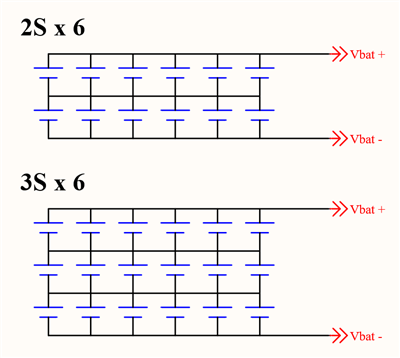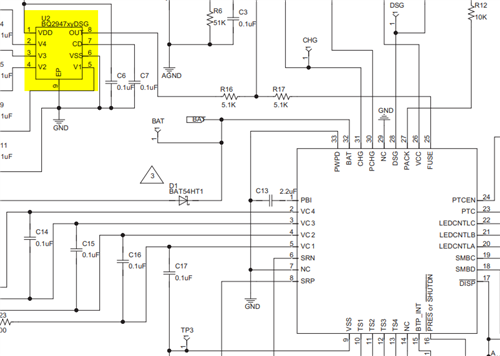Other Parts Discussed in Thread: BQ77915, BQ28Z610, EMB1499Q, EMB1428Q, BQ40Z50, BQ4050, BQ25713, BQ25713B, BQ25710, BQ2947, BQ40Z50-R1
Hi,
We’ve been using the BQ2980 in a few products and we absolutely love it because of the hibernate feature (RC timed shutdown) on the CTR pin and because it uses high side drivers.
However, we are working on a new product that cannot work on a single cell so we plan to use one of the following configurations.
Each cell is a 3.7V Polymer Lithium Ion.
Protection Requirements:
- Hibernate mode (prefer wake up on charge like the BQ2980 but it's not the only option)
- Cell balancing (strong preference for active)
- Over/under voltage
- Over/under temperature
- Over/under current (*1)
- Short circuit Protection (*1)
*1: we can probably manage current with fuses if we have to.
1)
I can see that BQ77915 implements a similar hibernate feature for 3-5 cells.
Will the protection features of the BQ77915 still work for the 3Sx6 configuration illustrated above? e.g. with parallel cells.
In this scenario, the BQ77915 wouldn’t be aware of the individual cells in each row and would see each row as a single cell.
2)
If we decide to go with a 2Sx6 configuration, is there another alternative Battery Protector that will allow us to keep the hibernate and balancing features?
3)
The above questions treat each parallel row as a single cell and connect to the Battery Protector as though it were just a simple 2S or 3S configuration.
How can we implement protection on an individual cell level? I’m not sure if it is necessary, but this E2E thread implies that it is.
4)
BQ77915 provides passive cell balancing. Is it possible to implement active balancing for the 3Sx6 and 2Sx6 configurations?
Kind regards,



